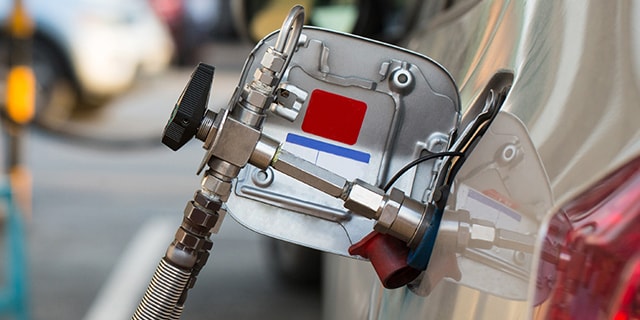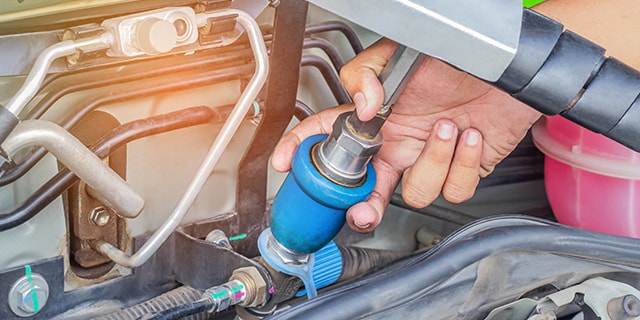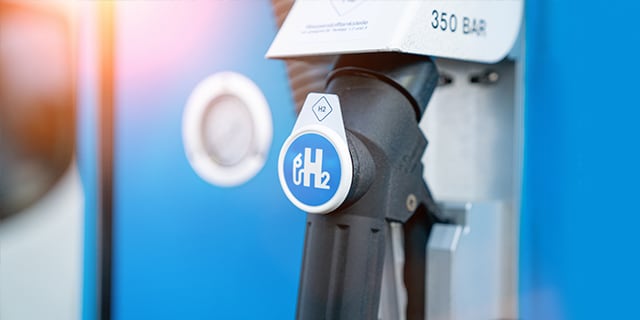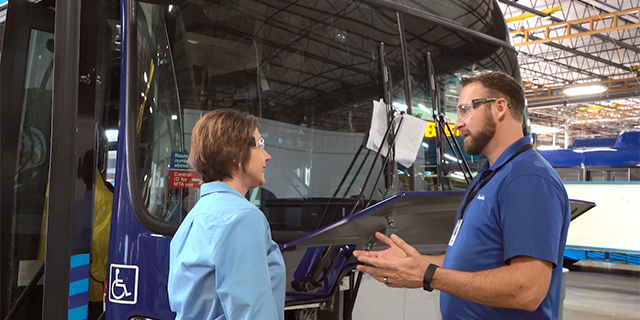Building Reliable Compressed Natural Gas Stations

Three Ways Smart Fluid System Choices Can Lead to Better CNG Refueling Stations
Chuck Hayes, Lead New Product Development Engineer, Swagelok, and Paul LeStrange, Technical Representative, Alternative Fuels, Swagelok San Diego
Heavy-duty trucks, municipal buses, and other large vehicles have historically been associated with diesel fumes and plumes of black exhaust.
But in 2021, these have become outdated assumptions. As emission regulations have tightened around the globe, the race for alternative fuel solutions for a variety of transportation applications has picked up the pace accordingly. Compressed natural gas (CNG) has become one of the most prominent alternative fuels by providing reliable horsepower, cost effectiveness, and dramatically reduced carbon emissions compared to fossil fuels. As a result, CNG vehicles have proliferated on roads and highways everywhere.
CNG’s ascent in popularity is set to continue. Consider that the U.S. government recently extended the Alternative Fuel Infrastructure Tax Credit. Per this extension, fueling equipment for natural gas— and a range of other fuels—installed through Dec. 31, 2021 is eligible for a tax credit of 30% of the cost of construction. Similar incentives are in place around the world, and these have helped spur the construction of a reliable refueling station network that makes CNG increasingly viable on a large scale.
To best capitalize on these opportunities and create a reliable compressed natural gas refueling station infrastructure for both public and fleet use, builders must consider how they balance the need to quickly ramp-up construction with the safety and integrity of fill equipment. When sourcing fluid system components for CNG refueling equipment, consider these three things:
#1: Maximize Efficiency and System Integrity with Preassembled Systems
A typical compressed natural gas station is made up of a complex network of tubing or piping, valves, and other components responsible for transferring the pressurized gas from a bulk source to the vehicle. Throughout this journey, the gas is compressed to the necessary pressure, distributed via priority panels and valves to individual pumps and hoses, then connected to a vehicle via a specialized valve.
Complete, prebuilt fluid systems can be professionally assembled before they arrive on-site, helping to expedite the construction process and ensuring that assembly has been performed correctly.
Designing and assembling these systems require specific knowledge about efficient layout along with safe installation practices. For example, an installer may start with a long piece of tubing, figure out the right places to bend it, and properly incorporate it into the system following established best practices.
The knowledge required to do this effectively is not especially common, nor is it always easy to reliably find laborers with the skills to put it into practice. Preassembled subsystems from a reliable supplier can help builders overcome these challenges. Complete, prebuilt fluid systems can be professionally assembled before they arrive on-site, helping to expedite the construction process and ensuring that assembly has been performed correctly.
#2: Enhance Safety with Leak-Tight Connections at High Pressures
Once the station has been built, operational safety is a top priority. CNG refueling pumps must be safely and easily operable by drivers every time refueling takes place. That means eliminating any potential leaks throughout the station, as well as properly maintaining and converting pressures from the source to the pump.
While natural gas is a common utility, and people are accustomed to using it, the pressures inherent to CNG create several different and important challenges. For example: CNG is stored on-site at refueling stations at pressures significantly higher than the point at which it enters a vehicle’s storage tank. As the pressure changes during refueling, the Joule-Thomson effect causes the gas temperature to drop significantly.
For traditional threaded connections, maintaining leak-tight performance at CNG’s necessary pressures and across significant thermal changes is difficult over the long term. Threaded connections between components can become compromised, and lesser-quality build materials can expand and contract due to temperature fluctuations. All of this may pose a significant safety risk. As such, specifying high-quality components—such as fittings designed to hold and maintain system integrity in demanding environments—is a necessity.
#3: Improve Reliability with Higher-Quality Materials
As with traditional threaded connections, traditional materials may not always be suited for CNG infrastructure applications, where long-term reliability and integrity are a must.
Carbon steel pipe and tubing, for example, provide good performance in a variety of general applications. However, in higher-stakes and higher-pressure applications such as CNG fueling, carbon steel may not provide the performance needed due to its increased susceptibility to corrosion and rust. Natural gas has an inherent humidity content that can contribute to higher corrosion levels among materials like carbon steel. CNG stations, being outdoors, must also contest with the elements—rain and snow can represent another corrosion threat.
Corrosion can cause small cavities, or pits, to form on the surface of a material, and even the smallest pit will eventually create issues when operating at the pressures required for CNG handling. This makes material choice important when scaling infrastructure. Using 316/316L stainless steel for refueling systems is a good choice, and selecting stainless steels with elevated nickel and chromium content can provide even greater protection against corrosion. Doing so can contribute positively to long-term performance without the need for continuous maintenance or replacement.
Reliable infrastructure is critical as CNG vehicles become more commonplace around the world. Efficient construction, operational safety, and long-term dependability can be achieved by working with the right suppliers to source high-quality assemblies and components that can perform under the conditions inherent to CNG refueling systems.
Interested in learning more? We have helped build high-performance CNG refueling infrastructure in locations around the world, and our field engineers and specialists are happy to help you achieve success with your next project.
Related Articles

Sourcing High Quality CNG Fuel System Components
Find out what to consider when selecting and sourcing critical fuel system components for compressed natural gas (CNG) vehicles, equipment, and infrastructure.

The Anatomy of a Hydrogen Fitting
Learn why fittings designed specifically for hydrogen applications can help fuel cell vehicle OEMs and infrastructure developers achieve safer and more reliable fuel systems.

Critical Components for Forward-Thinking Fuel Systems
Swagelok and bus manufacturer New Flyer have worked together for years to develop reliable alternative fuel systems for forward thinking transit applications.

